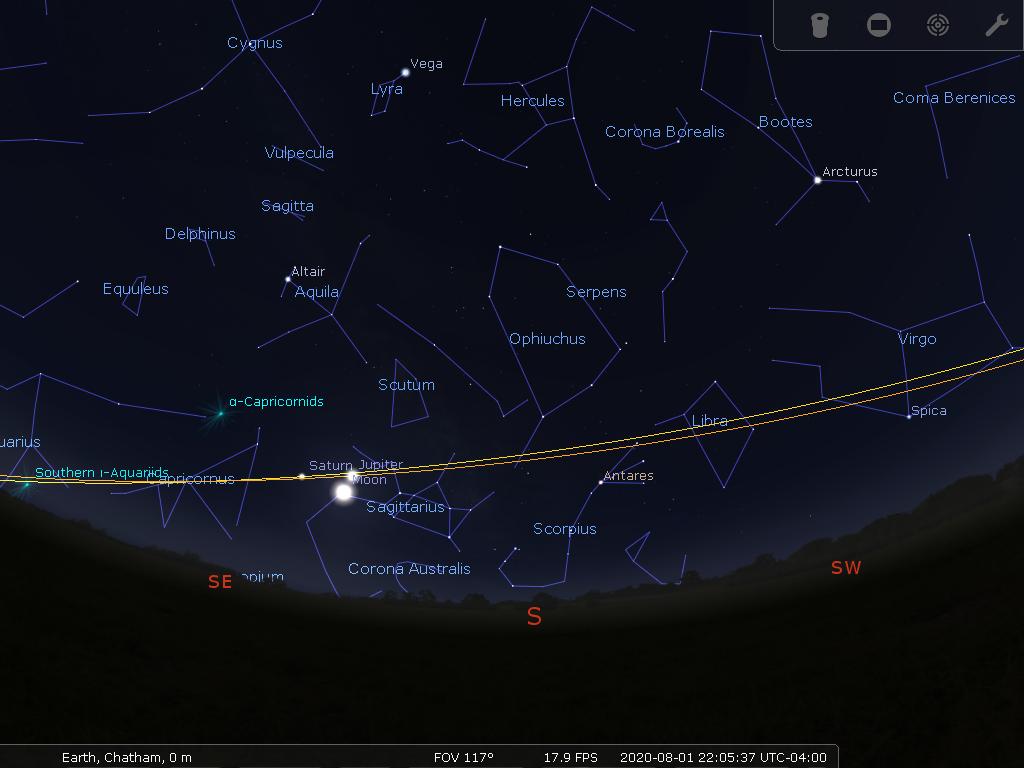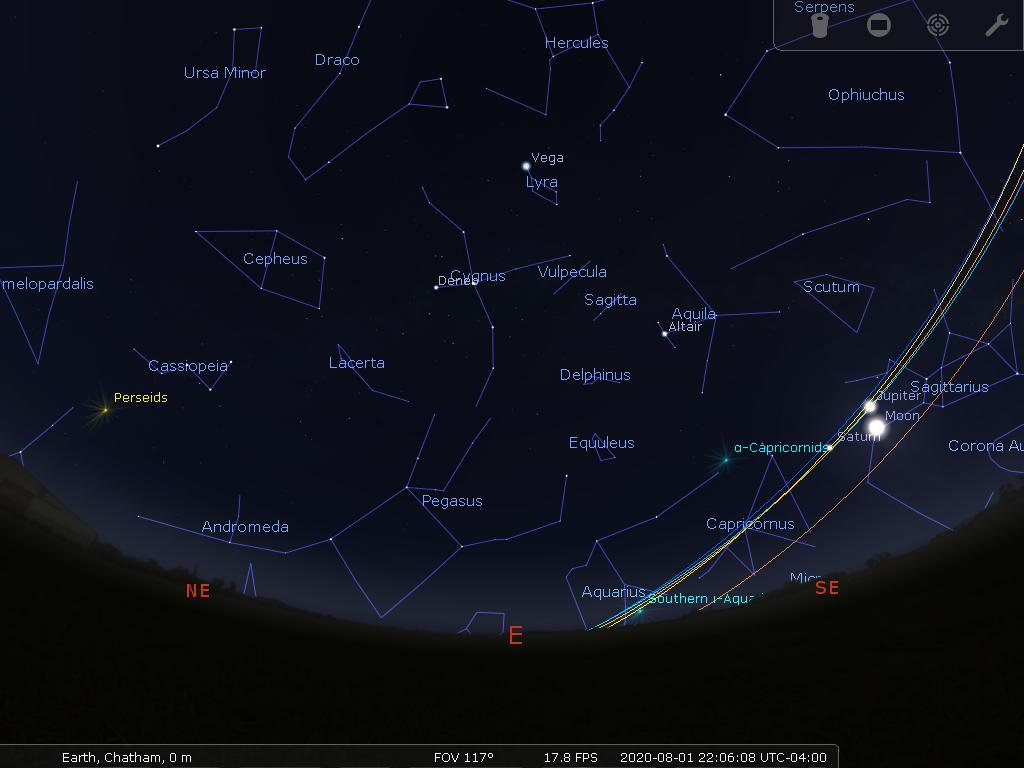As Southwest Ontario heads into late summer, our skies are filled with an assortment of objects, some bright and some fleeting. Early in the month to the south east, around 10 PM, you will find Jupiter and Saturn close to each other in the sky. These two planets both rise before sundown and will be easy to spot as darkness falls. Jupiter will be one of the brightest objects in the southern sky and looks like a large, bright, white star.. Saturn, located slightly east (or left) is dimmer but has a distinct yellow colour. Once you get used to seeing these planets in the sky, you will almost always recognize them.
August also brings the annual Perseid Meteor Shower. This is typically a favorite of people living in the Northern Hemisphere as it consists of frequent bright meteors and it happens in the summer. The peak this year will occur on August 12, but the Perseids are easy to watch the week before and after. Look anywhere in the sky, but closer to the constellation Perseus in the northeast generally gives the best results. However, looking to the south tends to show more bright, longer lasting meteors. Unfortunately, this year’s Perseids will compete with a waning Moon which rises around midnight. Its light will interfere with the prime early morning viewing hours.
That does not mean the shower is not worth seeing. The Perseids are known for their bright meteors, and a number of them will still be visible in the moonlight. Viewers can also go out in the late evening before the Moon rises. The tradeoff is meteor rates which are lower before the early morning hours but with darker skies the eye will be able to see shooting stars that are fainter. Those who wish to get out in the early morning to look will also be able to see Mars in the east. Iit rises around midnight in August and heads west through the early morning hours. Accompanying Mars is the planet Venus, which will be above the eastern horizon shortly after 3 AM in the mid month. For those out before sunrise, look for Venus in the dawn sky off to the east. It’s hard to miss, being the brightest light in the sky behind the Sun and Moon.
August is full of amazing targets for telescope owners. In the south, the faint glow of the Milky Way rises up from the horizon showing off its dust lanes and the central bulge which is the centre of our galaxy. The Moon, Jupiter and Saturn are always good telescope targets, particularly for beginners. They are bright and have a wide range of visible details that will challenge telescope users of all experience levels. Jupiter will show cloud bands and four of its moons. With planning, viewers can see the dark shadows of the moons moving over the clouds during transit. Saturn always features its rings and under the right conditions its moon Titan and some of the divisions within the rings may be visible. For those new to their telescope, I would recommend looking for M8, The Lagoon Nebula which contains a small open star cluster and M22 which is a nice bright globular cluster. Both of them are located in Sagittarius. A little more of a challenge is the Ring Nebula, or M57, in Lyra which is nearly straight overhead.
Don’t expect these objects to look like they do in pictures. There is a wide range of performance between telescope styles and apertures. It takes practice to coax out the details in objects of all sizes and brightness. In particular, deep space objects are small and do not give enough light for your eyes to see colour except in the rarest of occasions using uncommonly large telescopes. What human eyes can see is a faint cloudy glow when looking at nebulae and galaxies.
For those who want to see more of what’s up and when, one of the good freeware programs available is Stellarium. You can find versions for PC, MAC and Unix and there is even a web based option. Its not the only one out there, but it works well and the price is right. Happy sky hunting!










that picture is a great shot. We were able to see it clearly from the pier at Erieau, but no decent photo’s. Should have gotten up early in the morning like you, I think that’s when the best pics were taken. O well, I’ll catch it next time around in 8,000 years. lol